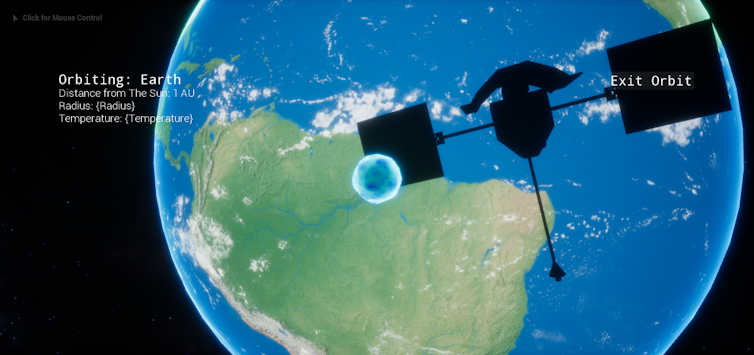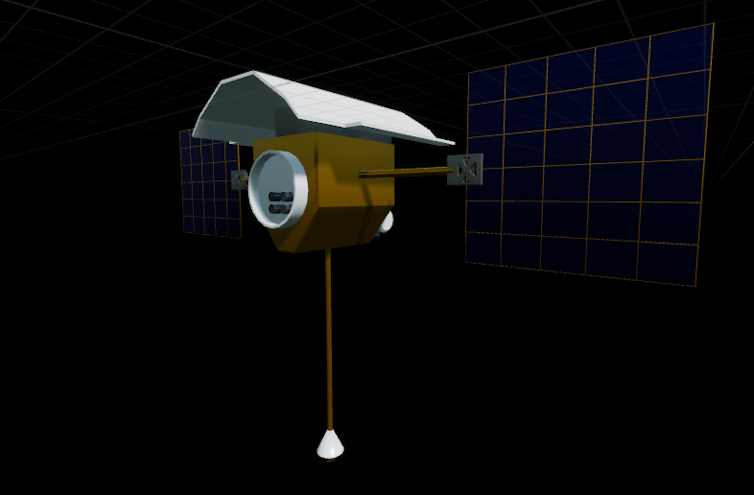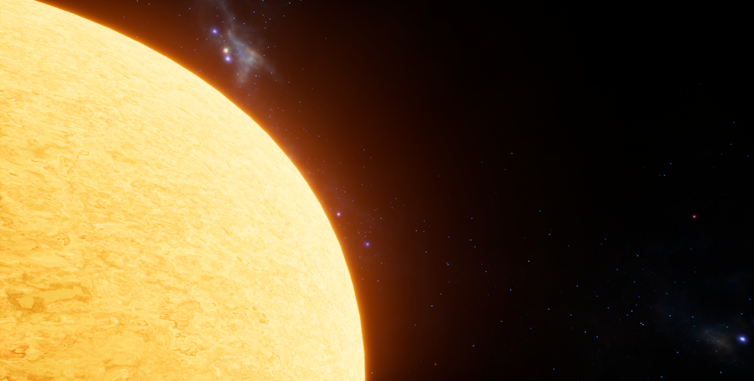Games
ECO
ECO is a popular online game where players must work together to build a civilization in a world where everything they do affects the environment around them. All resources come from a simulated ecosystem, with thousands of plants and animals simulating 24/7. Work together through the player-run government and economy to build the technology to stop a meteor on a collision course with the planet, without polluting the world and killing it off in the process before that even happens.
Eco is also aimed at classrooms, to connect students all over the world to solve global challenges inside this scientific ecosystem simulation.
TErra Nil
Reclaim the wasteland
Terra Nil is a reverse city builder about ecosystem reconstruction. Turn a barren wasteland into an ecological paradise complete with different flora and fauna. Then clean up, leaving the environment pristine. Subverting the builder genre, Terra Nil is about the restoration of a ravaged environment.
EarthGames : Climate Quest
Climate Quest is for ages 8 and up, and is designed to be played in a museum or classroom setting, or at home. It takes approximately 10 minutes to play through the game. Nintendo-style graphics. Winner of the Climate Game Jam 2015.
game of floods
The "Game of Floods" was developed by the County of Marin as a public education activity on sea-level rise adaptation, including traditional flood protection measures such as levees and seawalls; green infrastructure approaches including horizontal levees, wetland restorations, and beach nourishment; and policy/zoning changes. The Game of Floods is a small group activity, with 4-6 participants tasked with developing a vision for ‘Marin Island 2050,’ a hypothetical landscape that highlights the conditions that will be experienced in Marin in coming years with sea-level rise and increased storm impacts causing the loss or deterioration of homes, community facilities, roads, agricultural land, beaches, wetlands, lagoons, and other resources.
Host an adaptation planning party of your own! Email to request a kit or download the complete Game of Floods materials[PDF], and visit their official website to buy a pre-made kit.
NASA Climate Kids
NASA's Climate Kids website offers a variety of educational and interactive resources. These resources tackle the "big questions" of climate change as well as various elements of the science in a digestible format ideal for children. Climate Kids moreover provide a variety of games that can be accessed below.
PLan it green
"Created to complement the themes of the Electropolis 3D film and the Plan It Green: The Big Switch! game, National Geographic designed education materials to bring students in grades 4-12 content about energy sources, energy efficiency, and energy conservation. These free, standards-based, online education resources were developed for formal and informal educators to engage students in science, social studies, and geography concepts related to energy. These resources provide innovative strategies and approaches to teaching about complex energy topics in the classroom.
Questions about energy cannot be easily answered, and energy-related decisions require the work of many experts to address economic, political, environmental, and social factors. Be mindful of the complexity of issues around energy topics in both the national and global conversation as you engage students in these topics.
Educating about energy and energy choices is necessary. Students are future decision-makers, and the choices they make will be crucial to solving tomorrow’s energy problems. Arming students with a greater understanding of energy allows them to make wise choices in their lives and communities."
Read more at National Geographic.
Games4Sustainability
Games4Sustainability is a platform dedicated to making sure sustainability messages are more compelling, accessible, and fun! Visit their blog for stories of professionals using gamification, and browse their Gamepedia (https://games4sustainability.org/gamepedia/) for a vast array of games to play.
Why we're building a climate change game for 12-year-olds

There is no doubt that we need to teach kids about climate change.
But although the Australian Curriculum embeds climate change into its senior high school program, children are typically aged around 16 before they receive any formal teaching on the topic. We argue that this is too late.
Here’s a possible solution: “CO2peration” is an interactive, online game we developed for children aged 12-14. It teaches climate science in a politics- and emotion-free zone.
Read more: Our kids need to learn about climate change
In most countries, the topic of climate change is usually introduced at around the age of 16. Unfortunately, students at this age have largely made up their minds about climate change. Any efforts to teach them about the science may cement those opinions (both for and against) – particularly if it threatens their existing opinion.
This “made up their mind” phenomenon is known as a worldview – and it is the single biggest predictor of an individual’s opinion related to climate change.
Working with 12-year-olds
At the age of around 12, children undergo a rapid developmental change that, over the next 12 years, will take them fully into adulthood.
This change preempts some exciting intellectual developments. It prepares the child for some of the challenges of adulthood - such as building social networks, finding work or becoming financially responsible. It also allows them to start processing complex issues like nuclear energy or social justice.
So around age 12, children’s worldview is still open to change and they can take on board new information in a way that their older selves may not.

Although many communication researchers challenge the notion of “knowledge deficit” whilst communicating with adults (in essence questioning those who emphasise filling gaps in an individual’s understanding), this age group is at a stage when they do need to learn. Why else would they be in school?
Recent research also suggests that we may have dismissed the value of understanding the science of climate change too soon. Specific knowledge relating to climate change – including its physical characteristics, causes and consequences – is an important consideration in opinion development.
Read more: Science curriculum needs to do more to engage primary school students
Another important element in teaching children about climate science is their emotional well-being: will it alarm them? Climate communicators often use fear appeals and emotional pleas to promote engagement with climate science – often with unintended consequences. Such appeals can polarise an individual’s attitudes, and have been shown to be ineffective or even ethically questionable. How do we get around that?
Focus on science
When we teach children about their gastrointestinal systems, they learn that the stomach exists, the small intestine exists. They accept that these are real without ever having seen these organs inside their own bodies.
Teaching climate science as a series of physical processes and mechanisms establishes a factual foundation - in the same way we learn anatomy. This forms a knowledge foundation that can then, in higher grades, be used to talk about the socio-political aspects – when they are developmentally ready for such discussions.
Read more: Why hot weather records continue to tumble worldwide
Eliminating fear appeals gives children an opportunity to be exposed to abstract science without emotional noise. Teaching climate change in this way - as a specific, pure science - may diminish the influence of misinformation they’ll likely encounter at a later age, simply because they’ll understand it better. Research has shown, too, that younger students are less alarmed when learning about climate change than older adolescents.

Climate science is quite hard to teach, as textbooks and lectures don’t effectively illustrate the scale and interdisciplinary nature of its features. This is where 3D environments and gaming offer new opportunities.
Teaching in 3D
Although some developers have already identified gaming as a way to explore climate change, none focus on teaching specific climate science.
To fill this gap, we have created a 3D interactive climate science game for 12-year-olds. “CO2peration” turns the player into a particle of sunlight (also known as a photon), and takes them on a journey to find out why we have liquid water at Earth’s surface.
Starting with a space probe called Messenger, players go on fact-finding missions to collect samples and data in order to work out why Earth has a water-rich surface. It’s a scientific mystery that follows some of the pathways that led scientists to realise Earth’s climate is changing. From Mercury to Venus, Earth and Mars, players explore each rocky planet in our Solar System, and experience climate science in an exciting, abstract and empowering way – with no political or social context.

Players find out why Venus, although further away from the Sun, is hotter than Mercury. They explore, close up, how ice ages occur, and the extraordinary influence of Milankovitch cycles at work (the wobbly, changing orbits of Earth around the Sun). Children build and test 3D greenhouse gas molecules in minuscule infrared activity chambers. They zoom through the layers of Earth’s atmosphere – dodging space junk to discover the role our atmosphere plays in keeping our planet habitable.
Once we have launched the game, the same recruits who helped develop and test the first version of CO2peration (now 13 years old), will be tested again - as well as a new group of 12-year-olds. These tests will use game analytics and player surveys to determine what aspects of our game achieve the learning outcomes, and which areas are the most difficult to understand. We’re also interested to see (from an entertainment perspective) how long and how often players want to play.
Using this feedback, we can improve our game and hopefully create a versatile learning tool to teach children in Australia and the world about climate science.
![]() CO2peration is being tested as part of a PhD at the Australian National University. More information about how to get a copy of the game is available here.
CO2peration is being tested as part of a PhD at the Australian National University. More information about how to get a copy of the game is available here.
Inez Harker-Schuch, PhD candidate, Australian National University and Will J Grant, Senior Lecturer, Australian National Centre for the Public Awareness of Science, Australian National University
This article was originally published on The Conversation. Read the original article.



